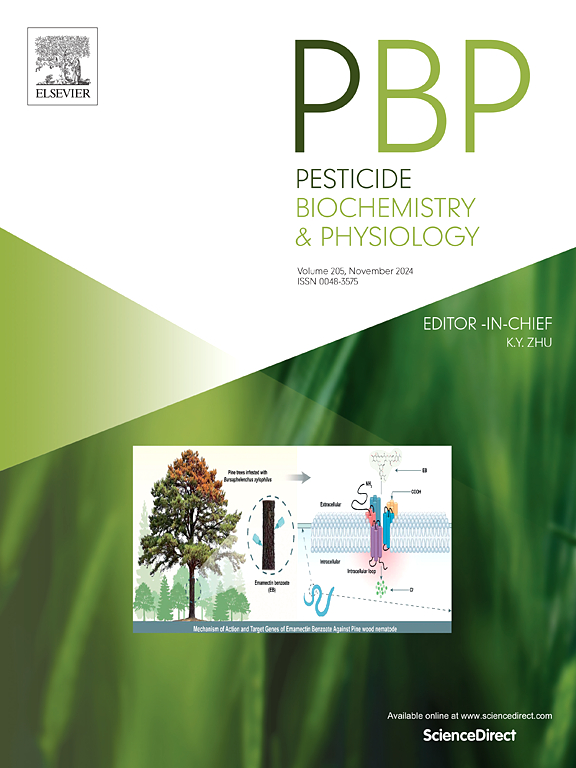RNA interference targeting β-N-acetylhexosaminidase genes impairs molting and development of Tetranychus urticae
IF 4.2
1区 农林科学
Q2 BIOCHEMISTRY & MOLECULAR BIOLOGY
引用次数: 0
Abstract
β-N-acetylhexosaminidases (HEXs) are key chitin-degrading enzymes in insects. Here, we identified TuHex1 and TuHex2 using insect orthologous genes by searching Tetranychus urticae genome and transcriptome database to investigate their roles in mite molting. TuHex1 and TuHex2 expression was induced by 20-hydroxyecdysone (20E), and inhibition of TuHex1 and TuHex2 expression by RNAi resulted in wrinkled cuticle or an inability to shed the old cuticle in nymphs, which may be due to a reduction in particle deposition in the exocuticle and lamellar structure in the endocuticle as revealed by scanning electron microscopy and transmission electron microscopy. The results suggest that the TuHex1 and TuHex2 genes play an essential role in the molting and developmental process of the mite. TuHex2, with a mortality rate of 67.41 % in the leaf disc assay, was a potential RNAi target by oral feeding. Spraying of nanocarrier-delivered bacteria expressing dsTuHex2 at 500 ng/μL kept spider mites at a consistently low level throughout the 14 days and showed good mite control comparable to that of matrine. In addition, nanocarrier-delivered dsTuHex2 is safe for Neoseiulus californicus in our experiments, providing its potential for green mite management.

求助全文
约1分钟内获得全文
求助全文
来源期刊
CiteScore
7.00
自引率
8.50%
发文量
238
审稿时长
4.2 months
期刊介绍:
Pesticide Biochemistry and Physiology publishes original scientific articles pertaining to the mode of action of plant protection agents such as insecticides, fungicides, herbicides, and similar compounds, including nonlethal pest control agents, biosynthesis of pheromones, hormones, and plant resistance agents. Manuscripts may include a biochemical, physiological, or molecular study for an understanding of comparative toxicology or selective toxicity of both target and nontarget organisms. Particular interest will be given to studies on the molecular biology of pest control, toxicology, and pesticide resistance.
Research Areas Emphasized Include the Biochemistry and Physiology of:
• Comparative toxicity
• Mode of action
• Pathophysiology
• Plant growth regulators
• Resistance
• Other effects of pesticides on both parasites and hosts.

 求助内容:
求助内容: 应助结果提醒方式:
应助结果提醒方式:


